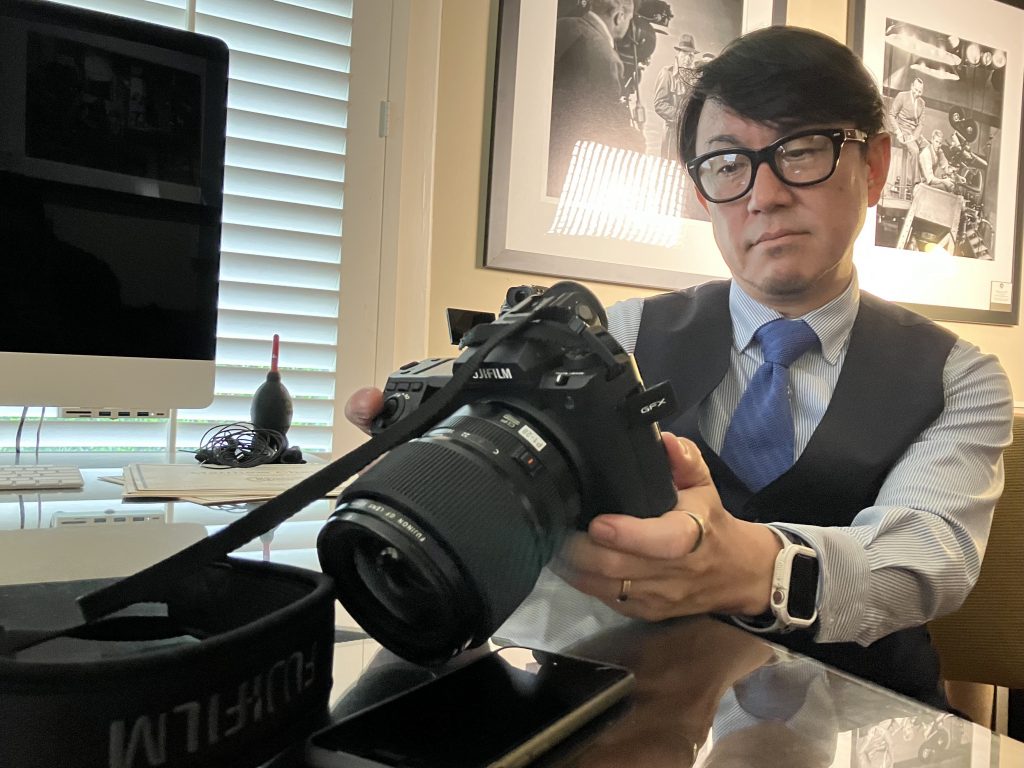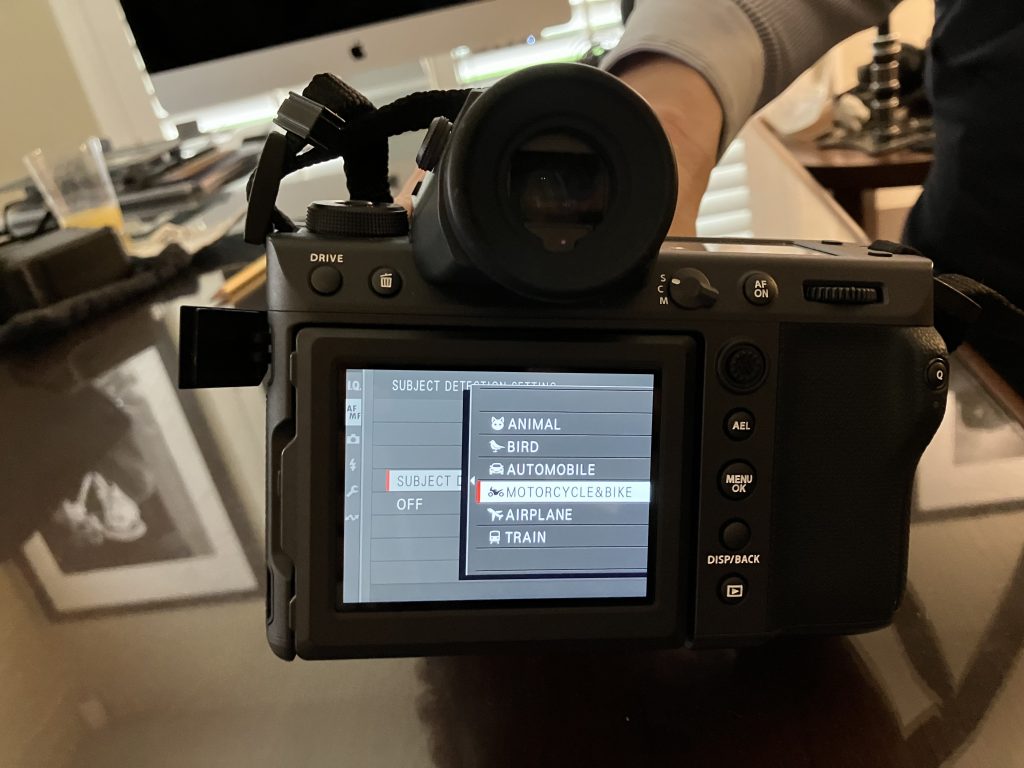
Makoto Oishi is the Product Planning Manager at Fujifilm. This past weekend he was on site at the exclusive ASC Clubhouse at a public event that allowed attendees to test drive the new camera and lenses. A leap forward for the line, it supports various cine recording formats including large format. There’s also a mirrorless camera which is very useful for behind-the-scenes photography.
In addition to products from Fujifilm, the event also featured 35mm anamorphic lenses from Atlas Lens Co. and Hawk.
There was a talk given by legendary stills photographer Melinda Sue Gordon, SMPSP, who recently shot already iconic images for two of the finest films of the year, Oppenheimer and Killers of the Flower Moon. She enthused about her preference for the Fujifilm X-H1 camera over competitors, noting that it was more like a real camera than the others.. Not only that, she had a rewarding open dialogue with the brand about some of its new features.
Below the Line had a chance to meet up with Oishi about the beloved camera, which quickly sold out once it was made available, at the event for a quick Q & A.
[Note: This interview has been edited for clarity and length]
Below the Line: How does the new camera and lenses improve on the previous versions?
Makoto Oishi: We already have several flagship models at GFX, but with this new one, we updated both the sensor and processor. So totally different generation, it achieves high performance with continuous shooting.
BTL: I read that this current model is good for professionals on the go who juggle different formats [such as stills and video]. How so?
Oishi: This is the best performance ever. It is a great camera for professionals making stills and video at the same time. It has more buffering memory than ever before. Switching formats in only one step. The ease of use between formats is a key selling point.
BTL: Can you tell me a little bit about the autofocus?
Oishi: So thanks to the new processor and new sensor, the autofocus performance is much better than before, especially for moving subjects.
BTL: Was there any sort of technological advancement that made any of these features possible, where they weren’t previously possible?
Oishi: Yeah, finally this camera has iSO-NET CAT6. The camera can also support IP and go directly to the cloud via Frame.io. Seamless delivery for editing.
BTL: What about the AI features?
Oishi: The new autofocus is run by AI. Not just for people — but a new feature called Subject Detection. This camera can track the subject with AI Detection. You want to film a bird flying? The AI will detect that it’s a bird and shoot it in a special way. Also, airplanes, animals, and trains.
BTL: Buffer memory is another feature. Can you tell us a little bit about that?
Oishi: This camera is a 100-megapixel camera, so it needs more buffer memory. This one has a huge buffer memory. Twice the size compared with the previous one.
BTL: How long did it take to develop the new camera?
Oishi: About three years. The sensor alone took a while to get perfect. That is one of the most important features of this camera.
BTL: Where can our readers pick up one of these cameras?
Oishi: In the United States, we have retailers all over the country. B&H, Samy’s Camera, and Amazon, to name a few.





